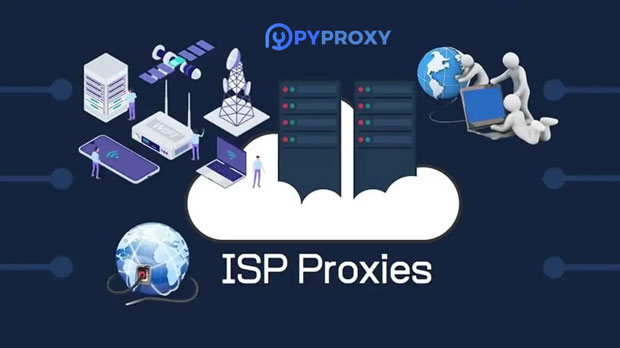What network restrictions can Resty bypass using SOCKS5 proxy?
In today’s digital age, many users around the world face the challenge of accessing content or services restricted by network limitations. Resty, a popular HTTP client, combined with a socks5 proxy, provides an effective solution to bypass such restrictions. socks5 proxies work by rerouting internet traffic through a third-party server, enabling users to access websites and services that might otherwise be blocked. Whether it’s accessing region-restricted content, enhancing security, or evading censorship, the combination of Resty and SOCKS5 proxies offers a valuable tool for overcoming network barriers. In this article, we’ll explore in depth how this combination helps users bypass various network restrictions, while also discussing its practical benefits and implications. 1. Understanding SOCKS5 Proxy and Its AdvantagesBefore diving into the specifics of how SOCKS5 proxies can bypass network restrictions, it's important to understand what a SOCKS5 proxy is and why it is effective. SOCKS5, or Socket Secure version 5, is a protocol designed to handle various types of internet traffic, including both TCP and UDP connections. It allows for secure and anonymous data transmission by masking a user’s IP address and routing traffic through a third-party server. SOCKS5 proxies differ from other proxy types in that they are capable of handling a broader range of internet activities, such as P2P connections, and can be used with a variety of applications, including web browsers, FTP clients, and HTTP clients like Resty.One of the main advantages of SOCKS5 proxies is their ability to bypass geographic restrictions. By routing traffic through a server located in a different region, users can access content that is otherwise unavailable in their own location. This is especially useful for streaming media, gaming, and other location-specific services. Additionally, SOCKS5 proxies offer a higher level of anonymity and security compared to traditional HTTP proxies, as they do not modify or filter data traffic, making them less detectable and more reliable for evading restrictions.2. How Resty Uses SOCKS5 Proxy to Overcome Network LimitationsResty is a widely used HTTP client known for its simplicity and flexibility in making HTTP requests. By integrating a SOCKS5 proxy, Resty users can bypass various network restrictions that might otherwise limit their ability to connect to certain websites or services.2.1. Bypassing Geo-RestrictionsGeo-restrictions are a common form of network limitation, where access to content is blocked or restricted based on the user's geographic location. Many services, such as streaming platforms, news outlets, or gaming servers, implement geo-blocking to prevent users from accessing their content in specific regions. By using Resty in conjunction with a SOCKS5 proxy, users can route their traffic through a server located in a different country or region. This makes it appear as though the user is accessing the internet from that location, effectively bypassing any geographical content restrictions.For instance, users in regions with limited access to streaming services can utilize a SOCKS5 proxy to connect to servers in countries where such services are available. This opens up access to a wealth of content that would otherwise be inaccessible due to geographic boundaries.2.2. Avoiding CensorshipCensorship is another form of network restriction that affects users, particularly in countries with strict internet regulations. Governments or other authorities may block access to certain websites, social media platforms, or news outlets in an effort to control information flow or suppress dissent. By utilizing Resty with a SOCKS5 proxy, users can bypass these censorship measures. The proxy masks the user's true IP address and routes the traffic through a server located outside the censored region, making it much harder for authorities to track or block access.This feature is particularly beneficial for individuals in countries with oppressive regimes where access to uncensored information is limited. It allows users to access global news, communicate freely on social media, and engage in online activities without fear of surveillance or restrictions.2.3. Enhancing Security and PrivacyIn addition to bypassing network restrictions, using Resty with a SOCKS5 proxy can significantly enhance a user's online security and privacy. SOCKS5 proxies encrypt data traffic, making it difficult for third parties, such as hackers or government agencies, to monitor or intercept communications. By routing requests through a third-party server, users can also protect their own IP addresses from being exposed, reducing the risk of identity theft or other cyber threats.This added layer of security is essential for users who are concerned about their personal data being exposed while browsing the internet or engaging in sensitive online activities. Whether it's accessing banking services or conducting private research, Resty with a SOCKS5 proxy helps ensure that communications remain secure and private.3. Practical Applications of Resty and SOCKS5 Proxy in Bypassing Network Restrictions3.1. Unblocking Restricted WebsitesFor many users, one of the most common uses of Resty with a SOCKS5 proxy is to access websites that are blocked or restricted by their internet service provider (ISP) or local authorities. For example, users in certain regions may find that popular websites like social media platforms, online forums, or news sites are inaccessible due to government-imposed censorship or ISP-level blocking. By connecting to a socks5 proxy server located in an unrestricted region, users can effectively unblock these websites and gain access to information or services that would otherwise be unavailable.3.2. Streaming Media and Accessing Restricted ContentStreaming platforms like video-on-demand services often impose regional restrictions on their content. A user in one country may be unable to access a movie or TV show available in another region. Resty, combined with a SOCKS5 proxy, allows users to connect to servers in different locations, thus enabling access to region-locked content. This is particularly useful for streaming platforms that offer exclusive content based on geographical regions.For instance, users in countries with limited access to international streaming services can use a SOCKS5 proxy to connect to a server in a country where these services are readily available. This method unlocks the full potential of streaming services, providing access to global content libraries.3.3. Bypassing Corporate or Institutional Network RestrictionsMany organizations or educational institutions impose restrictions on internet access to limit access to certain websites or applications. By using Resty with a SOCKS5 proxy, users can bypass these restrictions and gain access to websites or services that are blocked within the corporate or institutional network. This can be particularly useful for employees working remotely or students needing access to academic resources that might be restricted by their institution’s network policies.4. Limitations and ConsiderationsWhile using Resty with a SOCKS5 proxy offers many advantages, there are also some limitations and considerations to keep in mind. 4.1. Speed and LatencyOne potential downside of using a SOCKS5 proxy is the impact it can have on internet speed. Since data traffic is rerouted through a third-party server, it can result in increased latency or slower speeds. Users may experience slower browsing, downloading, or streaming speeds, especially if the proxy server is located far from their physical location. It's important to choose a reliable and fast SOCKS5 proxy server to minimize these effects.4.2. Legal and Ethical ImplicationsIn some regions, the use of proxies to bypass network restrictions may be considered illegal or against the terms of service of certain websites or platforms. Users should be aware of the legal and ethical implications of using SOCKS5 proxies in their specific region or for specific purposes.ConclusionResty, when combined with a SOCKS5 proxy, offers a powerful solution for bypassing various types of network restrictions, including geo-blocking, censorship, and access limitations imposed by ISPs or organizations. By understanding how SOCKS5 proxies work and their potential benefits, users can effectively access restricted content, enhance their online security, and maintain privacy while browsing the web. However, it's important to weigh the potential speed limitations and legal considerations before using such tools, ensuring that their use aligns with local laws and ethical guidelines.
2025-01-15
























































